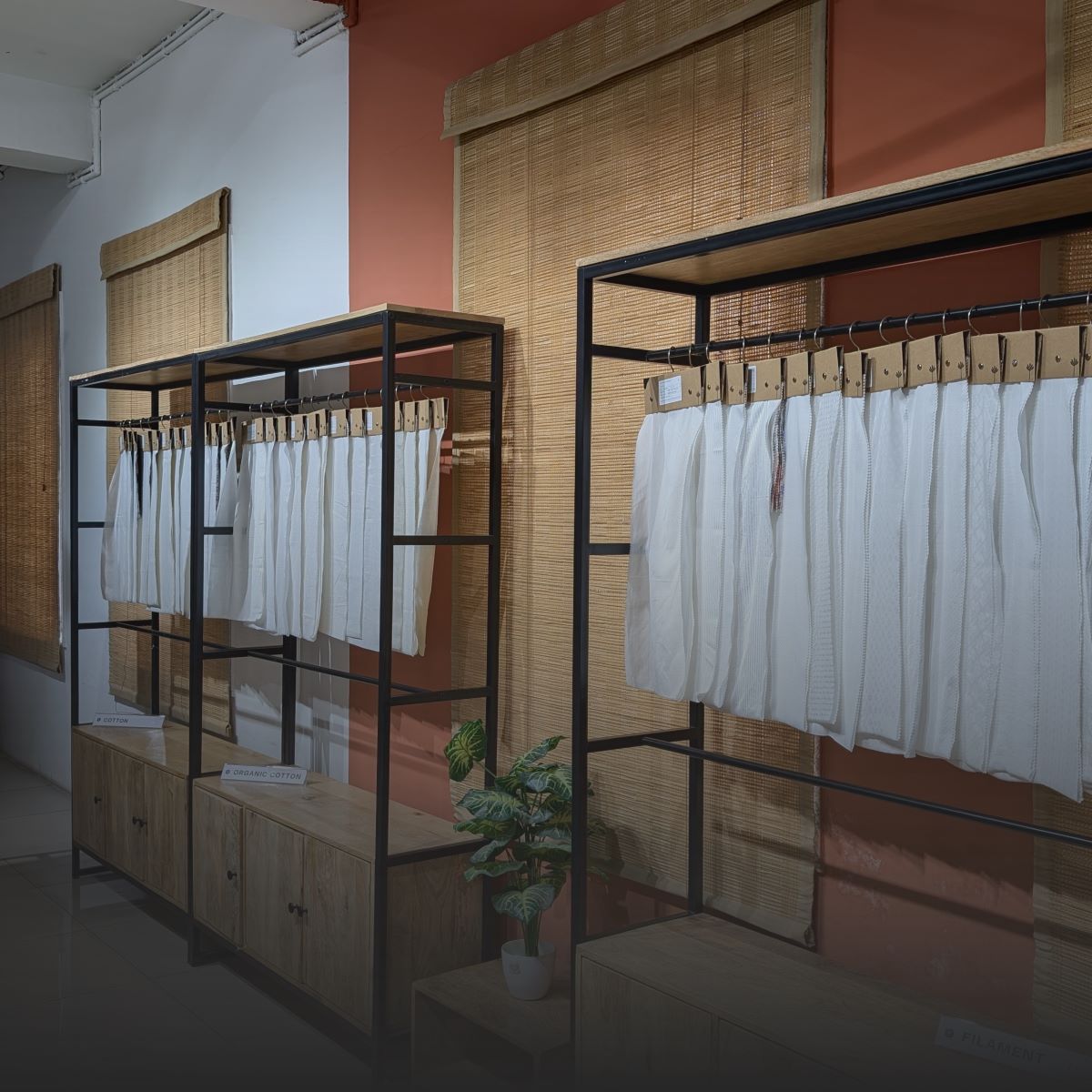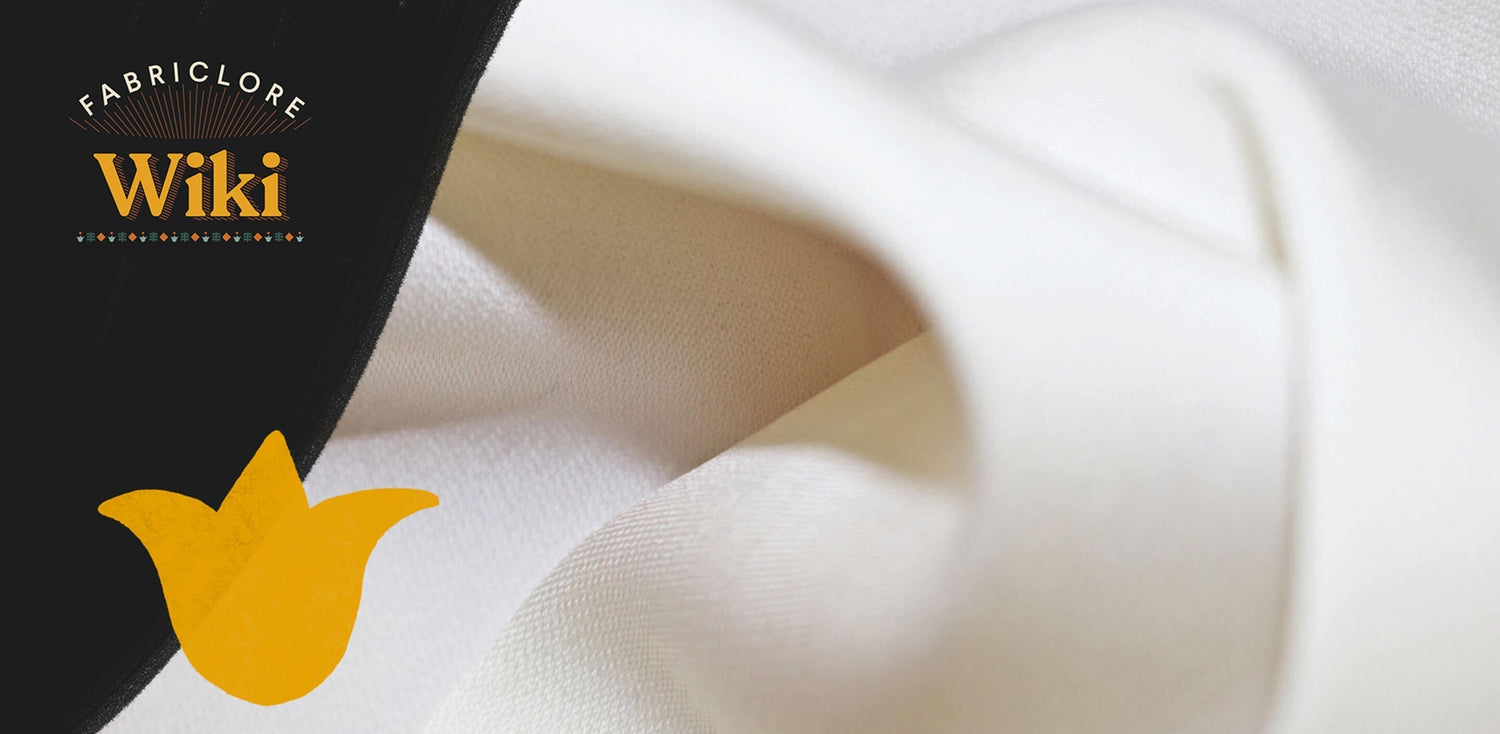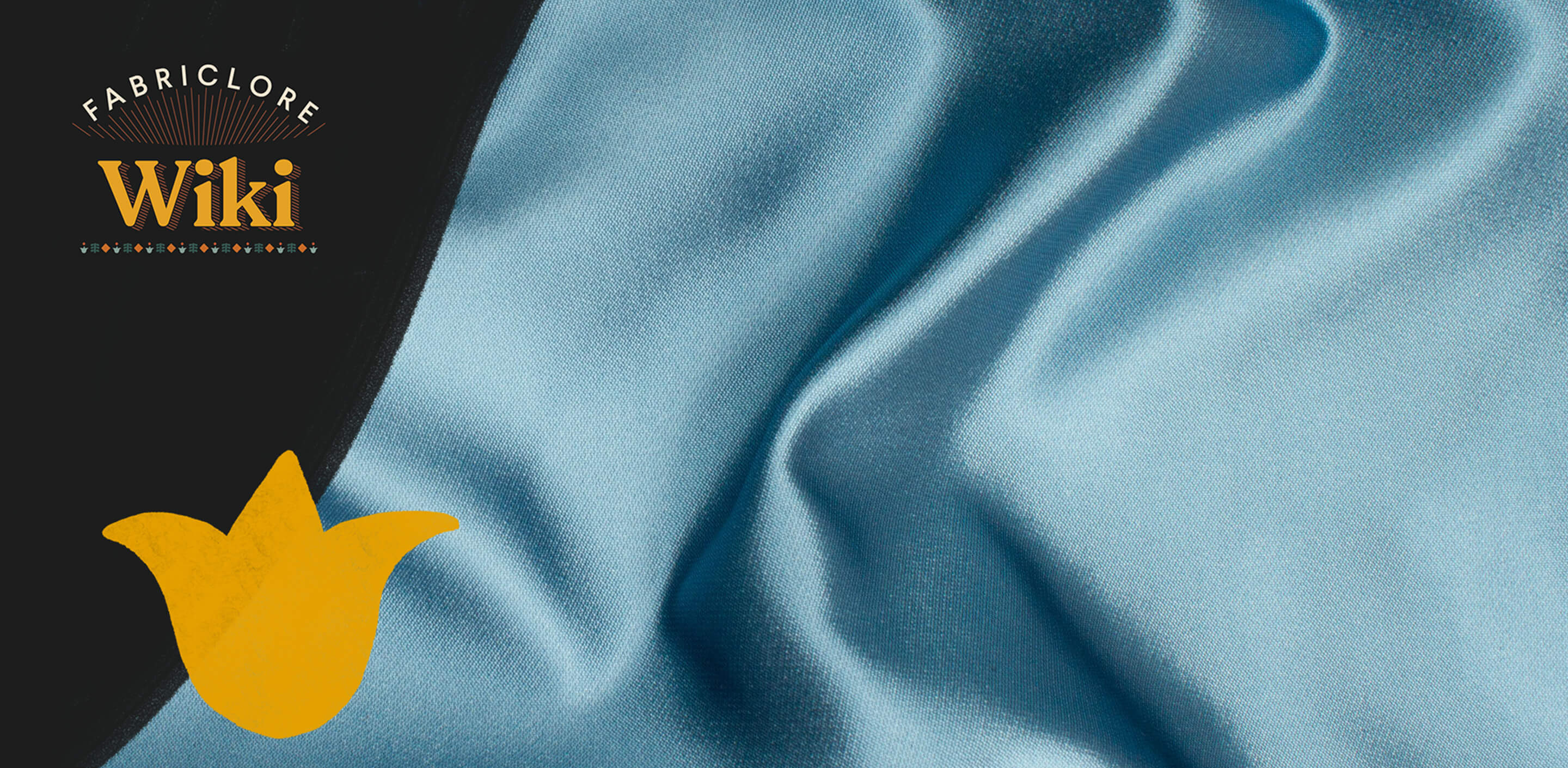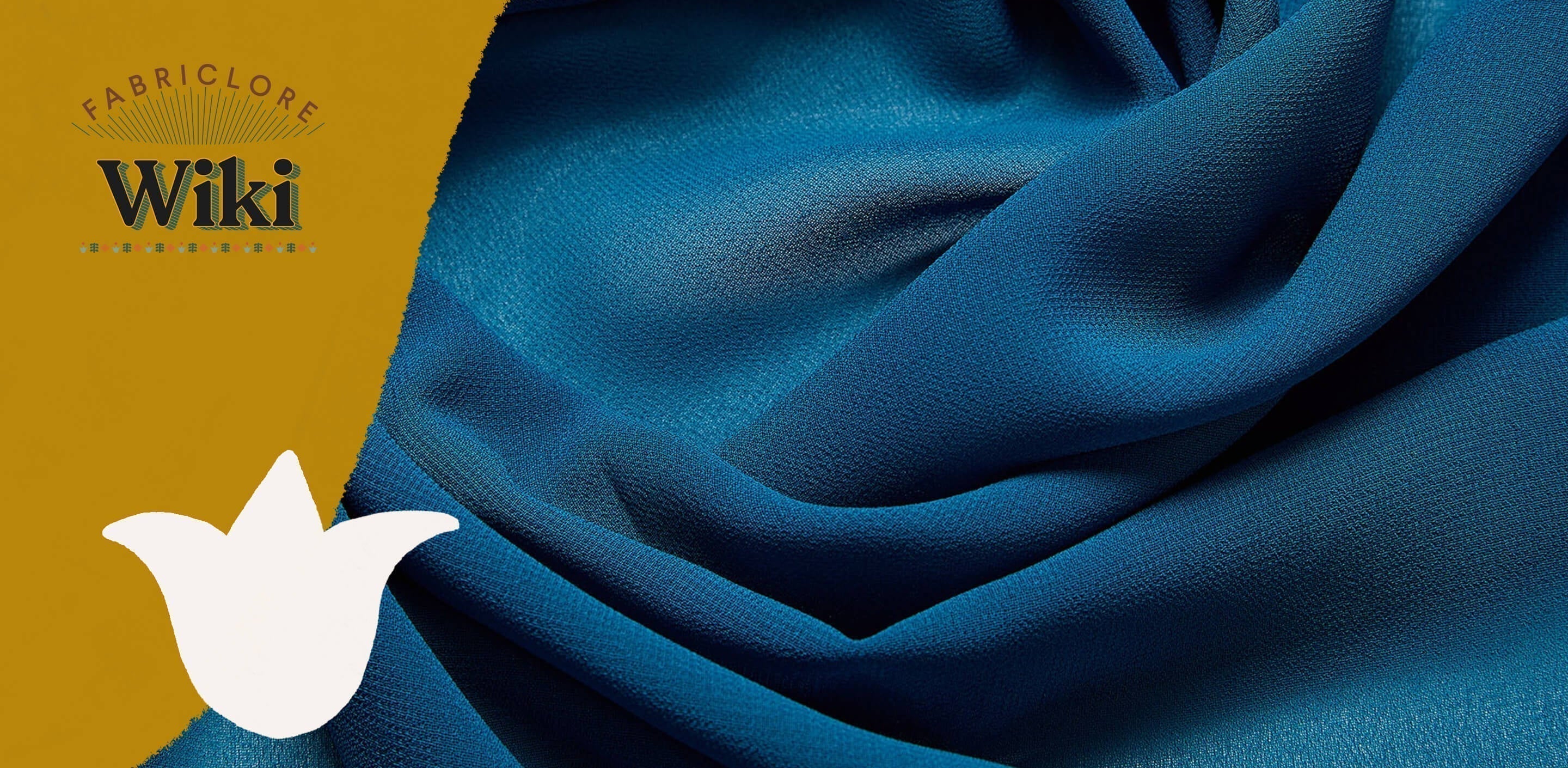People are becoming more interested in Taslan fabric as a high-performance material for tactical gear, sportswear, and outdoor clothing. This technical fabric is known for having a texture like cotton but is made to last. It's the perfect mix of comfort and usefulness. Taslan is now a top choice for designers and clothing makers who need materials that can be used in any weather and don't get wet.
This article will explain what Taslan fabric is, how it's made, what it's used for, how to care for it, how sustainable it is, and where you can fabric source Taslan for small-batch or custom production.
What Is Taslan Fabric?

Taslan is a fabric made from manufactured fibers, usually nylon or polyester, that have been treated with a special method known as air-jet texturizing. This method gives the yarn a matte, textured finish, making it look like real cotton.
Taslan is not like regular nylon or polyester. It is soft and airy, but it still has synthetic fibers' strength and water protection. DuPont was the first company to sell it, and since then, it has become a popular fabric for jackets and other practical clothes.
Key Characteristics Of Taslan Fabric

Taslan fabric is different from other manufactured fabrics because it combines comfort, performance, and toughness like no other fabric. Taslan was first made as a technical cloth, but it has quickly become popular for sportswear, outerwear, and utility fashion, and for good reason. Here are some of its most interesting features:
1. Water-Resistant or Waterproof: Coatings like PU (polyurethane) or DWR (durable water repellent) are often put on Taslan to make it very water-resistant. This makes it perfect for raincoats, windbreakers, and other outdoor gear that needs to keep out water.
2. Breathable and Quick-Drying: The air-textured strands in Taslan make it more breathable than regular nylon because they let air pass through. Also, it dries quickly, which is important for outdoor exercise.
3. Lightweight Yet Durable: Even though Taslan is soft, it is very tough. Because it has a high strength-to-weight ratio, it can handle rough conditions without making things bigger. This is great for hikers, sports, and traveling people.
4. Windproof Capabilities: Taslan has excellent wind resistance, which keeps you warm and safe in cold or windy places when woven and coated correctly.
5. Cotton-Like Feel: Taslan has a soft, matte finish that feels like natural fibers because its yarns are textured with air jets. This makes it suitable for people who like how cotton looks and feels but need synthetic performance.
6. Fade-Resistant and Color-Rich: Taslan holds dye well, so rich, long-lasting colors stay true even after many washes. This makes it perfect for trendy outfits and activewear.
You could say that Taslan has the comfort of cotton and the functionality of synthetics. This makes it one of the most useful fabrics for current fashion. Taslan cloth is both stylish and practical, so you can use it to make collections of both outerwear and athletic wear.
How Taslan Is Made

A sophisticated air-jet texturizing process turns flat synthetic yarns into soft, thick, long-lasting threads that feel like natural cotton. This is how Taslan fabric is made. This method makes the end fabric more comfortable and better at what it does, making it great for activewear and outdoor gear.
Key Steps In The Production Process:
Air-Jet Texturing: Fibers of nylon or polyester are blasted with high-pressure air, which makes them twist and get bulky. To make a soft, matte, and wrinkled yarn, do this.
Base Fiber Options:
- Nylon Taslan: Known for exceptional abrasion resistance and toughness.
- Polyester Taslan: Offers superior UV resistance and color retention.
- Spandex/Cotton Blends: Improve stretch, comfort, and breathability.
Weaving or Knitting: Textured yarns are either woven to give clothes structure (like jackets and windbreakers) or knitted to give clothes movement (like sportswear).
Performance Finishes: Fabrics can be treated with:
- PU coatings or lamination for waterproofing
- DWR (Durable Water Repellent) for water resistance
- Breathable membranes for ventilation and comfort
Sustainable Variants:
-
Recycled Taslan made from regenerated nylon/polyester supports eco-conscious fashion.
Types Of Taslan Fabric
Taslan comes in several different shapes and styles. Most people have one of these types:
- Nylon Taslan: High strength, best for rugged use.
- Polyester Taslan: UV-resistant and budget-friendly.
- Stretch Taslan: Blended with elastane for activewear.
- PU-coated Taslan: Waterproof with breathable membranes.
- Recycled Taslan: Made from post-consumer synthetic fibers, ideal for eco-conscious brands.
Applications Of Taslan Fabric
Fabric made from Taslan is commonly used for many valuable and practical items. Because it's long-lasting, doesn't get wet, and is comfortable, it's excellent for outdoor, sports, and tactical use. Here are some of the best ways that Taslan cloth is used in different fields:
|
Application |
Description |
Why Taslan Works |
|
Outdoor Jackets & Windbreakers |
Used for hiking jackets, shell coats, and windbreakers. |
Windproof, water-resistant, lightweight, and ideal for layering. |
|
Hiking & Trekking Pants |
Designed for rough terrain and active movement. |
Durable, stretchable (with elastane blends), and abrasion-resistant. |
|
Rainwear |
Includes rain jackets, ponchos, storm suits. |
PU-coated or DWR-treated Taslan offers waterproof protection. |
|
Sports Uniforms & Gym Wear |
Jerseys, track pants, gym shorts, and training wear. |
Breathable, quick-drying, and lightweight. |
|
Tactical & Utility Gear |
Military uniforms, cargo pants, tactical vests. |
Tough, long-lasting, and functional under stress. |
|
Luggage & Backpacks |
Bags, duffels, and lightweight travel gear. |
Tear-resistant, textured, and holds structure well. |
Taslan fabric is a reliable way to protect and look good in harsh weather or busy places.
Advantages Of Using Taslan Fabric

Taslan Textiles is one of a kind in the world of technical textiles because it is comfortable, long-lasting, and resistant to weather. Because of these main points, more and more designers and makers are picking it for outdoor and performance wear.
1. All-Weather Adaptability: Taslan is built to withstand harsh weather. Taslan is great for every season because it is water-repellent and windproof, so it isn't damaged by wind, rain, or changing temperatures.
2. Lightweight with High Strength: Taslan fabric offers a high strength-to-weight ratio, which is different from bulky materials used for outerwear. Because of this, it's perfect for making tough but light gear like military outfits, sportswear, and trekking jackets.
3. Comfort Meets Performance: Taslan has a soft, cotton-like texture because of a process called air-jet texturising. It still has the stretch and structure of synthetic fabrics, though. It feels good against the skin, lets air flow, and is often mixed with spandex to make it more flexible.
4. Durability in Harsh Conditions: Taslan is great for outdoor sports, tactical wear, and making uniforms that last a long time because it doesn't tear or wear down easily. It holds up well in rough places even after being used and washed many times.
5. Fast-drying & Easy to Maintain: The fabric doesn't grow mold or mildew and dries quickly, so it's low-maintenance and great for wet or humid places. These also dry clothes faster after washing, which is excellent for people always on the go.
Taslan Vs Other Technical Fabrics
That being said, how does Taslan compare to other technical fabrics?
|
Feature |
Taslan |
Ripstop Nylon |
Gore-Tex |
Softshell |
|
Water Resistance |
High (when coated) |
Medium |
Excellent |
Medium |
|
Breathability |
Moderate to High |
Moderate |
High |
High |
|
Texture |
Soft/Cotton-like |
Smooth |
Membrane-coated |
Fleece-lined |
|
Best For |
Outerwear, bags |
Tents, gear |
High-end shells |
Casual outerwear |
Taslan is a good choice to protect yourself from the weather, be comfortable, and save money.
Care And Maintenance Tips
To extend the life of Taslan garments:
- Wash in cold water with mild detergent.
- Avoid bleach or fabric softeners.
- Air dry or tumble dry on low heat.
- Reapply DWR (Durable Water-repellent) coating as needed.
- Store in dry, ventilated areas to prevent mildew.
If you take care of Taslan, it will keep its shape and work well over time.
Where To Buy Taslan Fabric

You can find Taslan fabric in textile markets worldwide and on online wholesale platforms. Platforms like Fabriclore are great for designers and companies that want to see low MOQ custom fabric or technical fabrics for small-batch production.
Is Taslan Fabric Sustainable?
Synthetic materials, such as nylon and polyester, which do not break down, are usually used to make taslan. However, new ways of reusing textiles have made it possible to create recycled Taslan from used plastic or fibers that have been grown again.
If you care about the environment, look for:
- GRS-certified recycled Taslan.
- Blends with organic cotton.
- Suppliers with OEKO-TEX or GRS certification.
Conclusion

There is a good reason why Taslan fabric has made a name for itself in the world of outdoor and performance textiles. Because it is durable, weather resistant, and comfortable like cotton, brands that make coats, sports gear, and technical clothing must use it.
Taslan's adaptability and changing eco-variants make it a good choice, whether you're just testing it out or making a lot of it. You can try custom textile development on platforms like Fabriclore, which gives you access to cutting-edge materials like Taslan with the help of experts.
FAQ’s
1. What is Taslan fabric made of?
Ans: The air-jet textured nylon or polyester fibres that make up most Taslan make it feel soft and cotton-like. Some versions have spandex for stretch or recycled fibres to make them more eco-friendly.
2. Is Taslan fabric waterproof?
Ans: Taslan is water-resistant on its own, but it becomes waterproof when coated with PU or DWR. Because of these treatments, it can be used for rainwear and windbreakers.
3. Is Taslan suitable for hot or humid climates?
Ans: Yes. You can use Taslan in humid or tropical weather because it is lightweight, breathable, and quick-drying. It doesn't grow mildew either and stays comfortable while you use it.
4. How do I care for Taslan garments?
Ans: To extend their life:
- Wash in cold water with mild detergent.
- Avoid bleach or softeners.
- Tumble dry low or air-dry
- Reapply DWR coating if needed
Proper care keeps Taslan durable and weather-resistant.
5. Where can I source Taslan fabric for small-batch production?
Ans: Online platforms that offer low MOQ custom fabric options are a good place to get Taslan. These platforms are great for boutiques, designers, and small fashion brands.
We also happen to be a magnet for suggestions, and would love to catch yours….throw us yours on hello@fabriclore.com




